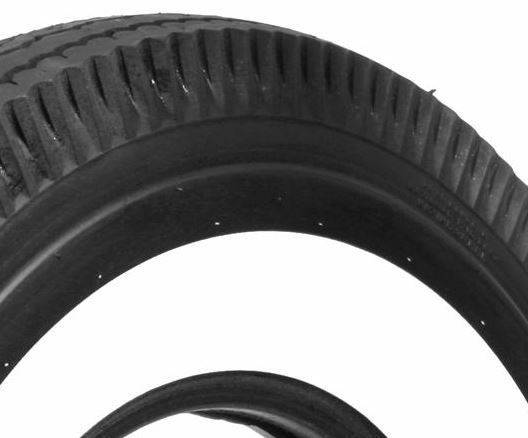Tires come in all shapes, sizes, and designs—from classic whitewalls to knobby off-road tires.
Underneath all those different looks and designs, you’ll find a series of textile plys and belts that make up the core construction of the tire. Typically, tires can be classified into one of two types: bias-ply and radial ply. What’s the difference and which is right for you vehicle?
Bias-Ply Tires

One way to spot a bias ply tire is by recognizing the "Pie Crust" edge on the tread. Image/Summit RacingBias-ply construction is the older-school method for tire design. This construction features multiple layers of material, or plys, that criss-cross each other in a diagonal manner. This makes for a strong tire because the plies overlap; however, the plies tend to move against one another and produce heat. In many cases, this design also allows the tread to squirm as it meets the road. In the mid-1940s, the tire industry developed radial tires to remedy these problems; however, many hot rodders still opt for bias-ply tires to maintain a period-correct look.
Popular bias-ply tires include drag tires, such as Mickey Thompson ET Street Tires and Hoosier Quick Time D.O.T. Tires, and classic hot rod tires like Coker Classic Bias-Ply Tires.
Radial Tires
Radial-ply construction configures the plies in parallel with one another and vertical to the tire bead. Radial tires typcially also incorporate a stabilizer, or belt, over the plies to give the tires additional strength and puncture-resistance. These tires are typically more flexible than the older bias-ply style tires, allowing them to conform to irregularties of the road. This design also helps the tire tread to maintain better contact with the road during cornering for improved traction and handling. Radial tires also have less rolling resistance than bias-plies in most cases, so they offer improved fuel economy.
New cars and light-duty trucks come with radial tires because they offer superior handling, ride quality, and wear.
Companies like Michelin, Bridgestone, and BFGoodrich make a wide variety of passenger and light truck radial tires.

Comments